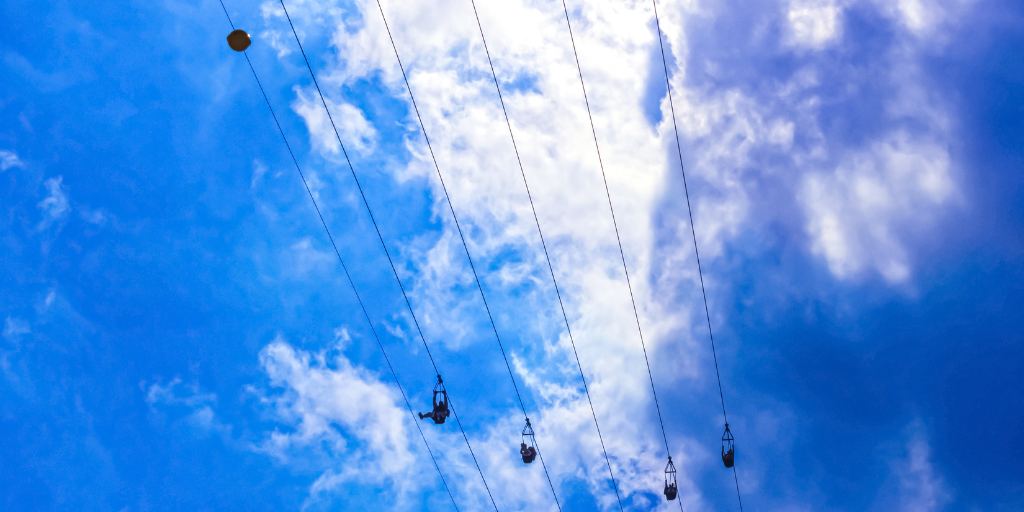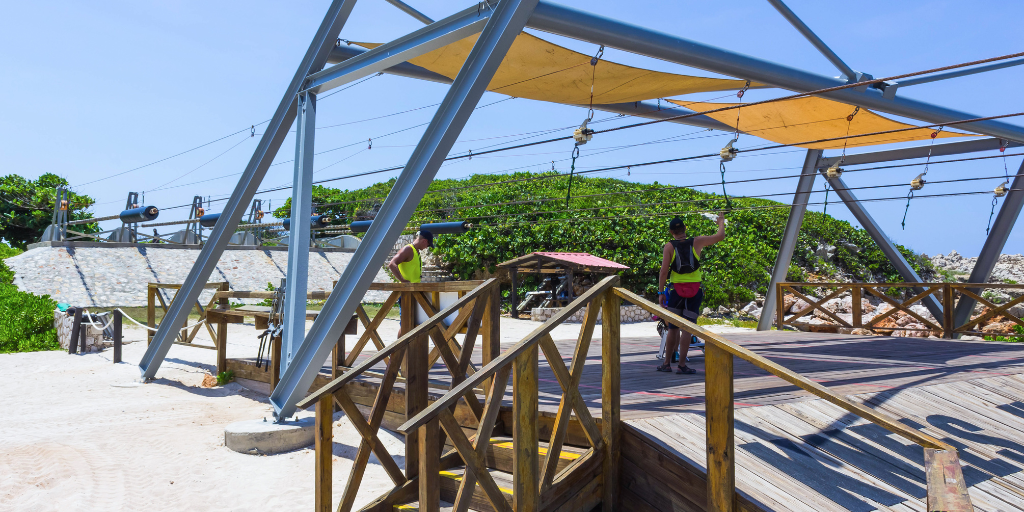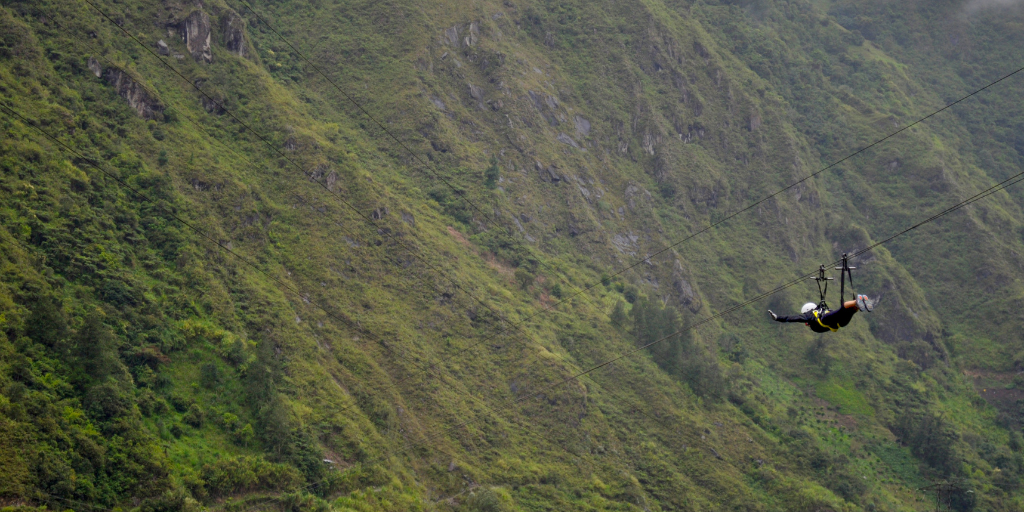Zipline design and engineering is a complex process that requires careful planning and execution to ensure the safety and success of the ride. There are several key factors that must be taken into account during the design and engineering process, including structural force analysis, rider velocities and kinetic forces, studies on crosswinds, tailwinds, and headwinds, cable specifications, tensions, and safety margins, secondary braking and dampening calculations, recommended trolleys, braking systems, and harnesses, site-specific operations and maintenance manuals, and throughput analysis.
Structural force analysis is critical to ensuring that the zipline system can withstand the forces that will be applied to it during operation. Rider velocities and kinetic forces must be carefully calculated to ensure that the zipline ride is safe and comfortable for the riders. Studies on crosswinds, tailwinds, and headwinds are necessary to ensure that the zipline ride can withstand the effects of wind on the cable. Cable specifications, tensions, and safety margins are crucial components that ensure the safety and success of the ride. Secondary braking and dampening calculations provide an extra layer of safety in case of an emergency. Recommended trolleys, braking systems, and harnesses must be carefully selected to ensure maximum safety and comfort for the riders. Site-specific operations and maintenance manuals are critical to ensuring that the zipline system is operated safely and efficiently. Throughput analysis is necessary to optimize the efficiency and profitability of the zipline ride.
We understand the importance of each of these factors in zipline design and engineering. Our team of experts has extensive experience in designing and engineering zipline systems with the highest safety and comfort standards. Contact us today to learn more about how we can help you design and engineer a successful and safe zipline system.

In this article we highlight the most important factors related to the professional design and engineering of ziplines:
Structural Force Analysis: The Key to Safe and Successful Zipline Design
Designing a zipline is not as simple as it may seem. It requires careful planning and execution, with safety as the top priority. Structural force analysis is a critical component of zipline design, as it ensures that the zipline system can withstand the forces that will be applied to it during operation.
Structural force analysis involves evaluating the loads that will be placed on the zipline cable, as well as the tension and stress that the cable will experience. This analysis takes into account various factors, such as the weight of the riders, the speed of the riders, and the angle and distance of the cable span.
Once the loads and tensions have been analyzed, the zipline system can be designed to meet the required safety standards. This may involve selecting a cable with the appropriate strength and diameter, or adding extra support structures to ensure that the cable remains stable during operation.
Our team specializes in this area, and we use the latest technology and techniques to ensure that your zipline system is safe, reliable, and efficient. Contact us today to learn more about how we can help you design and engineer a successful zipline system.
Understanding Rider Velocities and Kinetic Forces in Zipline Design
One of the most important considerations in zipline design is the safety and comfort of the riders. This includes taking into account the velocities and kinetic forces that will be experienced by the riders during the zipline ride.
Rider velocities are affected by various factors, such as the slope and length of the zipline cable, as well as the weight and aerodynamics of the rider. Calculating the rider velocities is critical to ensuring that the zipline ride is not too fast or too slow, and that the riders are able to safely and comfortably complete the ride.
Kinetic forces are another important consideration in zipline design. These forces are the result of the rider's movement and can be affected by factors such as the angle of the cable and the rider's body position. Kinetic forces can cause discomfort or even injury to the rider if they are not properly accounted for in the zipline design.
At Skywalker, we understand the importance of rider velocities and kinetic forces in zipline design. We have extensive experience in analyzing and calculating these factors, and we use the latest technology and techniques to ensure that your zipline ride is both thrilling and safe. Contact us today to learn more about how we can help you design and engineer a successful zipline system that maximizes the thrill and safety for your riders.

Navigating with the Elements:
The Importance of Studying Crosswinds, Tailwinds, and Headwinds in Zipline Design and Engineering. When designing and engineering a zipline system, it's important to take into account the effects of wind on the ride experience. Crosswinds, tailwinds, and headwinds can all affect the speed and stability of the zipline cable, which in turn can impact the safety and comfort of the riders.
Crosswinds are winds that blow perpendicular to the direction of the zipline cable, while tailwinds blow in the same direction and headwinds blow in the opposite direction. The strength and direction of these winds can vary greatly depending on the location and time of year, so it's important to study the wind patterns in the area where the zipline will be located.
We use advanced technology and techniques to analyze wind patterns and their effects on the zipline ride experience. Based on this analysis, we can make informed decisions about the cable tension, support structures, and other design elements that are critical to ensuring a safe and comfortable ride.
The Backbone of Zipline Design, the Cable:
Cable Specifications, Tensions, and Safety Margins. When designing and engineering a zipline system, the cable specifications, tensions, and safety margins are crucial components that ensure the safety and success of the ride. The zipline cable is the backbone of the entire system, and it must be designed to withstand the forces that will be placed on it during operation.
Cable specifications include the diameter, strength, and material of the cable. These specifications are determined based on the weight and speed of the riders, as well as the span and slope of the cable. At Skywalker, we use only the highest quality materials and cables that meet or exceed industry standards.
Cable tension is another critical factor in zipline design. The tension must be carefully calculated to ensure that the cable remains stable during operation and that the riders experience a smooth ride. Too much tension can cause the cable to snap, while too little tension can cause the cable to sag and create a safety hazard.
Finally, safety margins are added to the cable specifications and tensions to provide an extra layer of safety and to account for unforeseen circumstances. Safety margins ensure that the zipline system can withstand unexpected loads or stresses and that riders are always kept safe.
We bring extensive experience in designing and engineering zipline systems with the right cable specifications, tensions, and safety margins. We use advanced technology and techniques to calculate these critical factors and ensure that your zipline system is safe, reliable, and efficient. Contact us today to learn more about how we can help you design and engineer a successful zipline system.
Emergency Arrest Devices and Secondary Braking requirements
The Importance of Secondary Braking and Dampening Calculations in Zipline Design and Engineering. Secondary braking and dampening calculations are critical components of zipline design and engineering that ensure the safety and comfort of the riders. These calculations take into account the speed and weight of the riders, as well as the slope and length of the cable, to determine the necessary secondary braking and dampening systems for the zipline ride.
Secondary braking systems provide an extra layer of safety in case the primary braking system fails or malfunctions. These systems can include various mechanisms, such as friction brakes or mechanical stops, that are designed to slow down or stop the rider in case of an emergency.
Dampening systems, on the other hand, are designed to reduce the impact of the rider's landing and prevent injuries. These systems can include shock absorbers, cushions, or other mechanisms that reduce the force of the rider's impact upon landing.
At Skywalker, we understand the importance of secondary braking and dampening calculations in zipline design and engineering. We apply advanced technology and techniques to calculate the necessary braking and dampening systems for your zipline ride, ensuring that your riders are always kept safe and comfortable. Contact us today to learn more about our expertise in zipline design and engineering.

Maximizing Safety and Comfort:
Our Recommendations for Trolleys, Braking Systems, and Harnesses in Zipline Design and Engineering. When designing and engineering a zipline system, choosing the right trolleys, braking systems, and harnesses is crucial to ensuring the safety and comfort of the riders. At Skywalker, we recommend the following components for your zipline ride:
Trolleys: We recommend using trolleys that are designed for high-speed zipline rides and can handle the weight and speed of the riders. Our trolleys are made from high-quality materials and are designed to provide a smooth and stable ride.
Braking systems: We recommend using a combination of primary and secondary braking systems to ensure the safety of the riders. Our braking systems are designed to slow down and stop the riders smoothly and quickly in case of an emergency.
Harnesses: We recommend using harnesses that are specifically designed for zipline rides and provide maximum safety and comfort for the riders. Our harnesses are adjustable and can be customized to fit riders of different sizes and weights.
We understand the importance of selecting the right components for your zipline ride and have extensive experience in designing and engineering zipline systems with the highest safety and comfort standards. Contact us today to learn more about our recommendations for trolleys, braking systems, and harnesses in zipline design and engineering.
Maintaining Safety and Efficiency
The Importance of Site-Specific Operations and Maintenance Manuals in Zipline Design and Engineering. Once your zipline system has been designed and engineered, it's important to have a site-specific operations and maintenance manual to ensure that the system is operated safely and efficiently. The manual provides detailed instructions and guidelines for operating and maintaining the zipline system, tailored to the specific location and conditions of the site.
The operations manual includes information on how to operate the zipline system, including procedures for launching and stopping the ride, and guidelines for rider behavior and safety. The maintenance manual includes information on how to inspect and maintain the zipline system, including guidelines for cable and trolley inspection, and procedures for replacing worn or damaged components.
We provide comprehensive site-specific operations and maintenance manuals for all of our zipline systems. Our manuals are designed to ensure that your zipline system is operated safely and efficiently, and that it remains in excellent condition for years to come. We work closely with our clients to tailor the manuals to the specific needs and conditions of the site, providing detailed instructions and guidelines that are easy to understand and follow. Don't let the safety and efficiency of your zipline system be compromised by improper operation and maintenance.
Optimizing Efficiency: The Importance of Throughput Analysis in Zipline Design and Engineering
Throughput analysis is a critical component of zipline design and engineering that ensures the efficiency and profitability of the zipline ride. Throughput analysis involves analyzing the number of riders that can be processed through the zipline system in a given amount of time, and identifying potential bottlenecks or inefficiencies in the system.
Throughput analysis takes into account various factors, such as the length and slope of the cable, the weight and speed of the riders, and the braking and trolley systems. By optimizing these factors, the zipline ride can be designed to maximize the number of riders that can be processed through the system, while still maintaining the highest safety standards.
At Skywalker, we have extensive experience in conducting throughput analysis as part of our zipline design and engineering process. Our team of experts uses advanced technology and techniques to identify potential bottlenecks and inefficiencies in the system, and to recommend solutions that optimize efficiency without compromising safety or rider comfort.
Don't let inefficiencies compromise the profitability of your zipline ride. Contact Skywalker today to learn more about our expertise in throughput analysis and how we can help you design and engineer a zipline system that maximizes efficiency and profitability.
Additional expert Information regarding Zipline technology
Interested to read more about Zipline technology and expert opinions?
- Zip Line Design: Components for a Complete System
- MAG Brake Trolley, the Magnetic Self-braking Zipline pulley
- Professional Zipline Engineering & Design services
- How to Launch a Zip Line Company
- The Science of Zipline Design and Engineering
- Zipline Mistakes You Don’t Know You’re Making
- Key elements: Zipline Design and Engineering
- Thinking of investing and operating a Zipline?
- Zipline Emergency Arrest Devices (EADs): The Ultimate Safety Solution
- The ZipCoaster - Fly through the air, dipping and twisting
- Pros and Cons of Different Zip Line Brakes
- Expert Tips for Zip Line Brake Installations
- Whitepaper: Zipline Braking Dynamics
- Thinking of investing and operating a Zipline?
- Whitepaper: Additional Information Regarding Zipline EADs
- What is a self-braking magnetic zipline trolley?
- How Trolley Technology is Revolutionizing Adventure Parks
- Ingenious inventions. The curvy zip line














